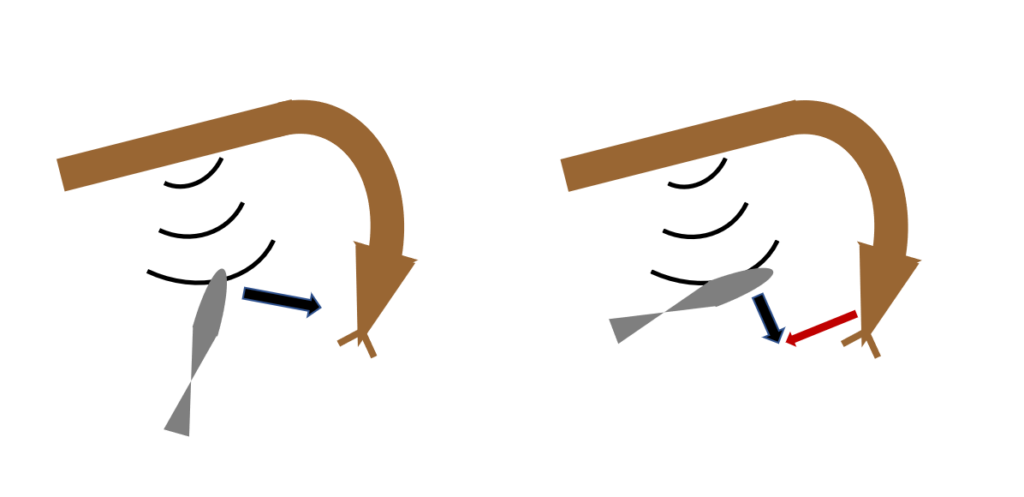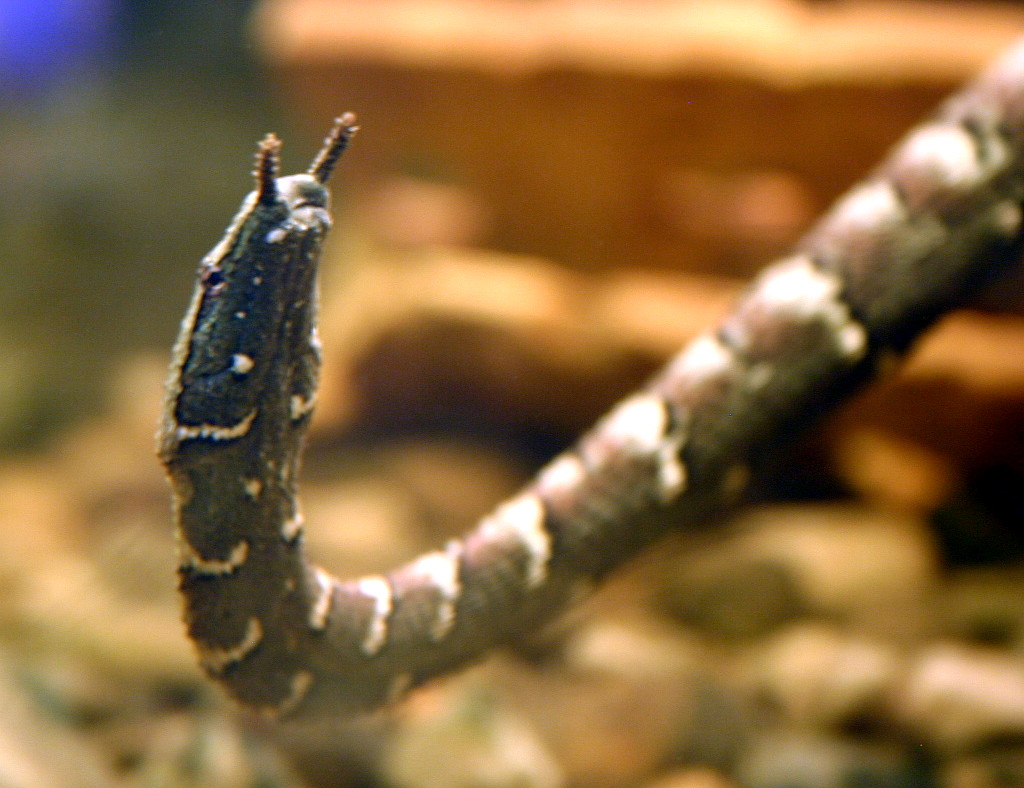Tentacled snakes live their whole life in the fresh waters of Southeast Asia. They feed exclusively on fish and evolved unique tricks to catch them.
Using fish defences against them
The snake waits for its prey motionless, with its neck bent in a characteristic J (or hook) shape, as if trying to look over its ‘shoulder’. When a fish swims into the “hook”, the snake moves its neck muscles, opposite its head. This alarms the prey, who tries to escape. Instinctively the fish tries to flee the perceived thread using the so-called C-start reflex. It bends its body to change movement direction. But the snake is ready.
If the fish entered the “hook” parallel to the snake’s head (see the left panel of the figure below), its C-start reflex leads it directly towards the attacking predator’s mouth. When it notices the real threat, it’s too late to change direction, as its body is already busy with the instinctive movement.
If the fish entered the “hook” parallel to the snake’s body (see the right panel of the figure below), the C-start response could potentially allow the fish to escape. But the predator also has good instincts. It can predict where the fish will go, strikes towards the expected location and catches the prey.

Evolutionary match
The instinctive escape reflex of fish usually lets them escape predators, but tentacled snakes evolved a hunting strategy that exploits this innate behaviour. The snake’s attack strategy is also instinctive. It doesn’t have to learn what the fish will do, but its own innate behaviour is perfectly tailored to the typical timing of the prey’s escape response. It takes the fish about 25 milliseconds to bend into a C-shape that initiates escape and it takes about 25 milliseconds for the tentacled snake to reach the fish.
Since tentacled snakes are not common predators, there is not enough selective pressure for evolution to change fish behaviour. Although there seems to be some variability in fish escape response and some make unexpected moves which may let them escape the predator.
What about the tentacles?
The tentacles are a unique feature among snakes. They are small, scaled appendages on the snake’s head which are very sensitive to water movement, and supplement the snake’s already good vision when determining a fish’s location. They also allow snakes to hunt in murky water and at night. Tentacle snakes can even catch fish in total darkness albeit with lower accuracy.
Information source: Kenneth C. Catania “Tentacled snakes” Current Biology 2022
Polską wersję tego wpisu możesz znaleźć tutaj.
Photo Ryan Somma – originally posted to Flickr as Tentacled Snake, CC BY-SA 2.0, https://commons.wikimedia.org/w/index.php?curid=5076856

